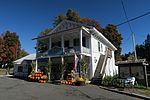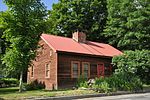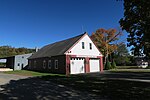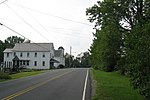Center Cemetery
1774 establishments in the Province of Massachusetts BayCemeteries established in the 1770sCemeteries in Hampshire County, MassachusettsCemeteries on the National Register of Historic Places in MassachusettsNational Register of Historic Places in Hampshire County, Massachusetts ... and 1 more
Worthington, Massachusetts

Center Cemetery is a historic cemetery on the south side of Sam Hill Road in Worthington, Massachusetts. The 2.4-acre (0.97 ha) cemetery was established c. 1774 (the date of its earliest marker), and continues to be used today. Its burials include many of the founders and early settlers of Worthington, and of families influential in the growth and development of the town. The cemetery listed on the National Register of Historic Places in 2004.
Excerpt from the Wikipedia article Center Cemetery (License: CC BY-SA 3.0, Authors, Images).Center Cemetery
Sam Hill Road,
Geographical coordinates (GPS) Address Nearby Places Show on map
Geographical coordinates (GPS)
| Latitude | Longitude |
|---|---|
| N 42.394444444444 ° | E -72.943333333333 ° |
Address
Sam Hill Road 77
01098
Massachusetts, United States
Open on Google Maps










